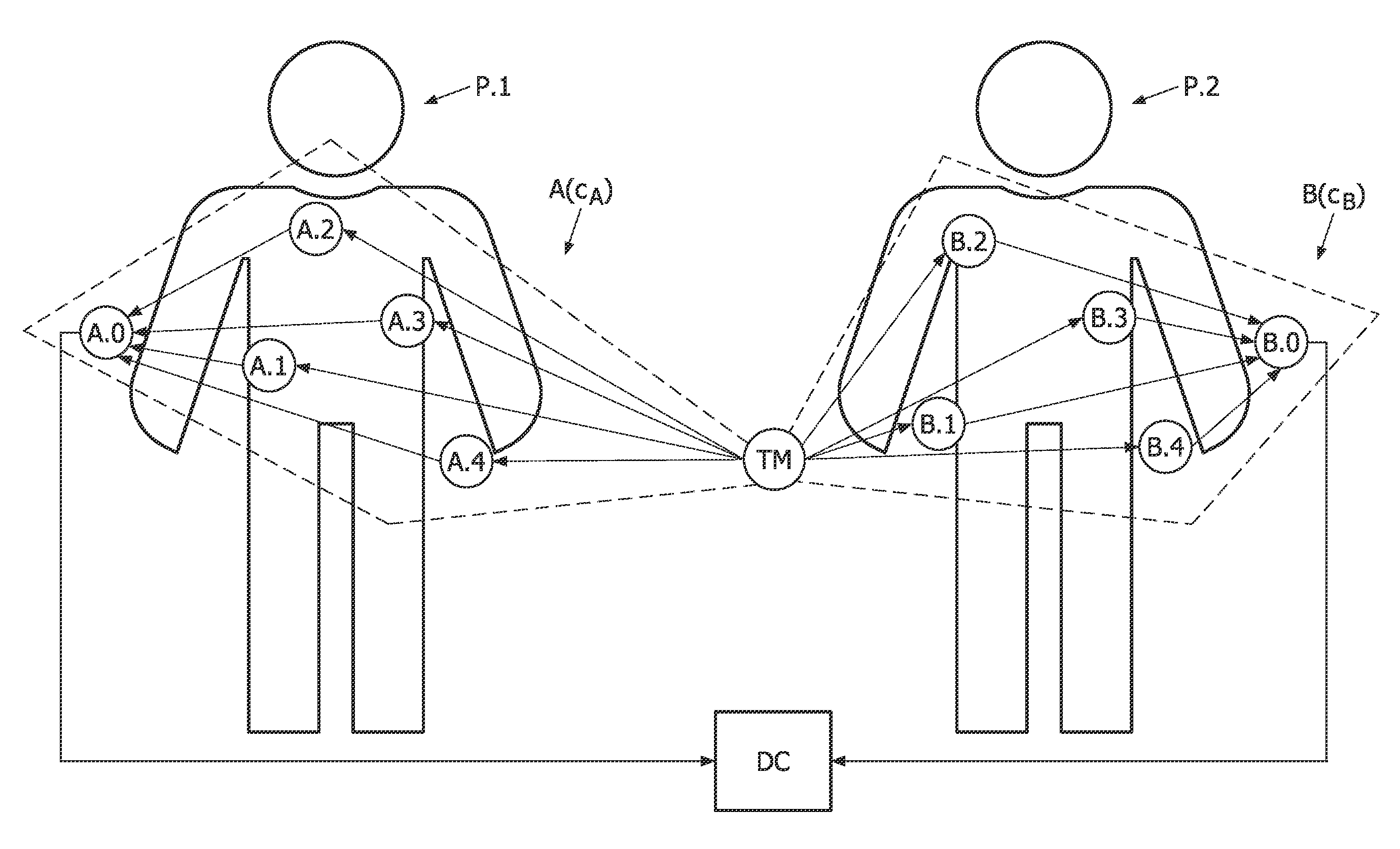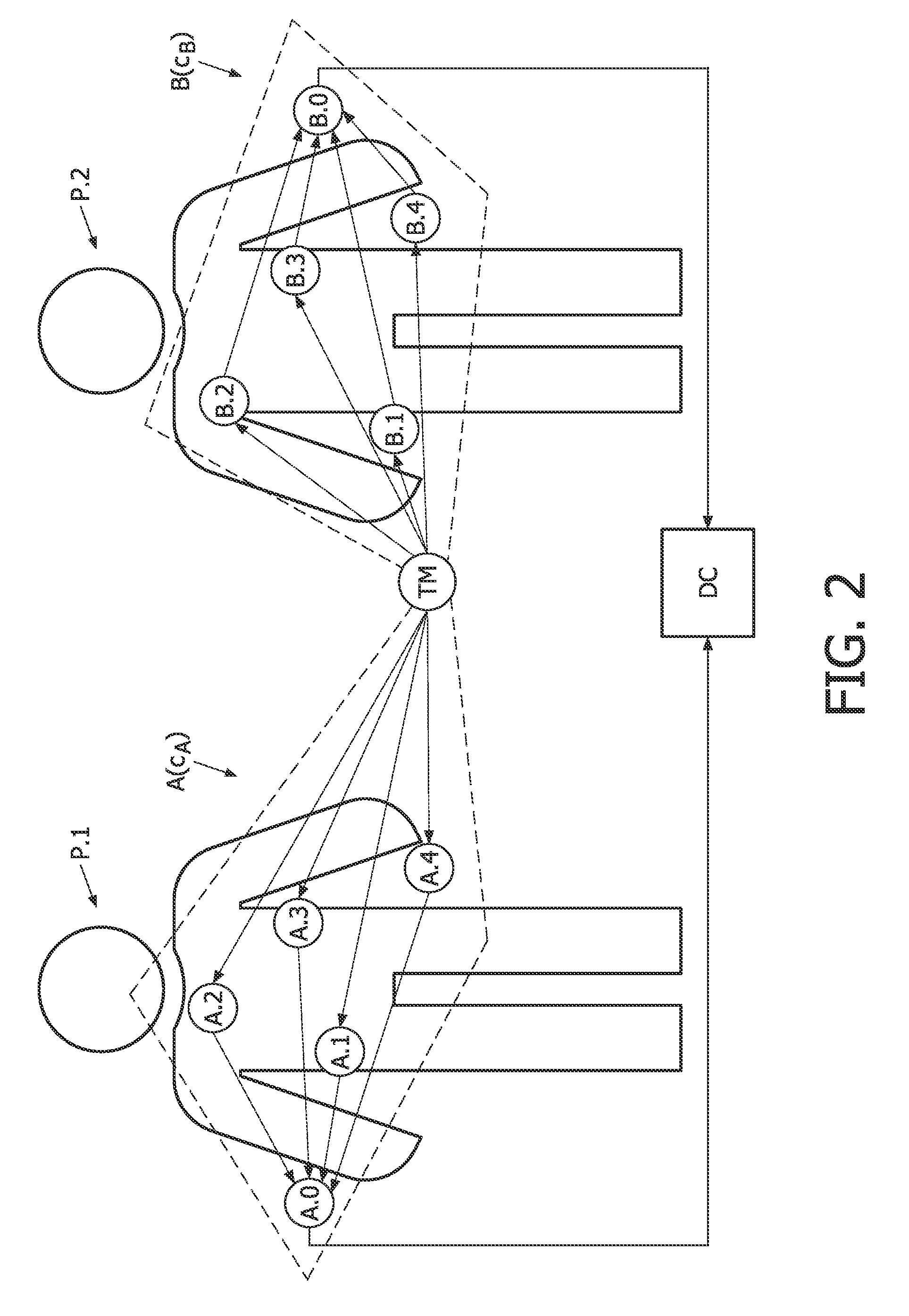Time synchronization of a plurality of different wireless networks with data sensors
a wireless network and data sensor technology, applied in the field of wireless networks, can solve the problems of complex and complicated solutions, time synchronization across networks operating on different channels, etc., and achieve the effect of convenient, efficient and reliable manner
- Summary
- Abstract
- Description
- Claims
- Application Information
AI Technical Summary
Benefits of technology
Problems solved by technology
Method used
Image
Examples
Embodiment Construction
[0030]According to the invention, it is proposed to use only a single time master for all networks operating on different radio channels, instead of using an individual time master for each network. Further, a preferred measure is that the one and only time master consecutively broadcasts its time synchronization messages on all radio channels.
[0031]FIG. 1 schematically shows an ensemble of wireless networks according to an embodiment of the invention. Here, this is shown for a case in which two separate body sensor networks A, B operated on FTSP and on different radio channels cA and cB need to be synchronized. Network A operates on channel cA and consists of four body-worn sensors A.1, A.2, A.3, A.4 sending their readings to gateway A.0. Further, network B operates on channel cB and consists of four body-worn sensors B.1, B.2, B.3, B.4 sending their readings to gateway B.0. A data collector DC is provided which receives from both gateways A.0 and B.0 data from all sensors A.1, A.2...
PUM
 Login to View More
Login to View More Abstract
Description
Claims
Application Information
 Login to View More
Login to View More - R&D
- Intellectual Property
- Life Sciences
- Materials
- Tech Scout
- Unparalleled Data Quality
- Higher Quality Content
- 60% Fewer Hallucinations
Browse by: Latest US Patents, China's latest patents, Technical Efficacy Thesaurus, Application Domain, Technology Topic, Popular Technical Reports.
© 2025 PatSnap. All rights reserved.Legal|Privacy policy|Modern Slavery Act Transparency Statement|Sitemap|About US| Contact US: help@patsnap.com



